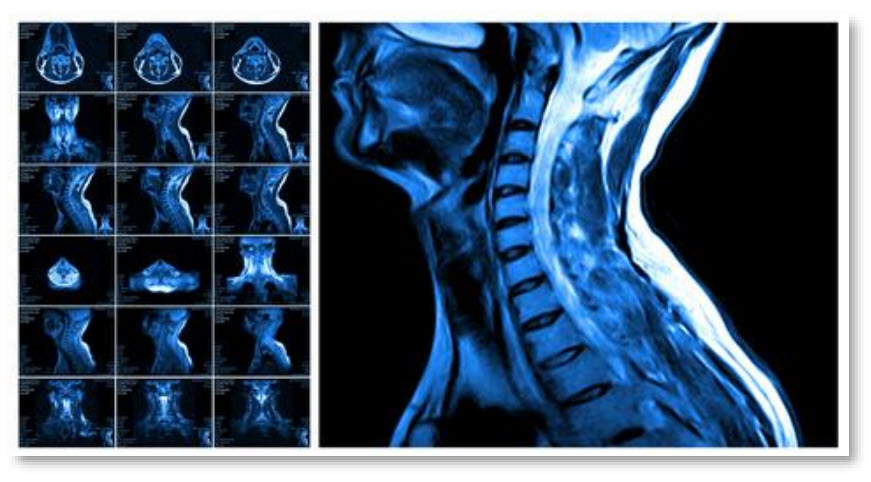
Improvement In Neck Curve Increases Brain Blood Flow

Some of the strongest and most sturdy structures in the world contain arcs. Buildings, bridges, and doorways often include arches in order to sustain the forces continually acting upon them. The longevity of these structures, both new and historic, depend on sustaining the design for hundreds of years. Structures tend to maintain their strength and resilience until the first signs surface that one of the arches began to weaken.
The model reflects human biomechanics. The most important structures in the body contain arcs. The human spine comprises the most importance arches of all. The spine requires three important curves (as viewed from the side) for optimal health. The curvatures make the spine stronger and more durable. Losing curves in the spine alters function in the body and predisposes the bones and discs to unnecessary wear and tear.
Loss of spinal curves usually occurs slowly over years or decades due to poor posture and ergonomics. Spinal curves also reduced due to trauma such as whiplash or other forms of natural or unnatural impact. Abnormal spinal curves create cosmetic changes which affect appearance and posture but the most harmful result of losing curvature degrees comes from the damage done to nerve and blood flow. Loss of neck curve alone associates with decreased vertebral artery hemodynamics. This means a loss of appropriate neck curve reduces blood flow to specific parts of the brain and body.
Patients entering Chiropractic or medical offices with a loss of neck curve experience greater risk for increased spinal cord and nerve tension, pain, disability, poor health, and lowered quality-of-life. The increased stress points stemming from a reduced spinal curvature lead to increased vertebral stress, providing the basis for vertebral compression, osteoarthritis, and even bone spur formation. The muscles and soft tissue which supports the neck must work harder to compensate for biomechanical instability. Soft tissue weakness and damage eventually begin to materialize and amplify the original problem.
Chiropractors pay close attention to the health of spinal curves by evaluating the structure and range of motion of the spine. X-rays prove valuable in locating trouble spots and assessing the need for care. Most Chiropractors specialize in evaluating and correcting spinal curvature and motion to restore proper nerve and blood flow. Clinical trials show that correction of the cervical curve improves a vast array of symptoms and conditions. A 2019 study utilized Magnetic Resonance Angiogram (MRA) to measure cerebral blood flow before and after taking steps to improve the neck curve. Decreased neck curvature also reflected decreased blood flow on MRA reports. Correction of the neck curve resulted in an immediate and significant increase in the amount of cerebral blood flowing to and from the brain. The results proved consistent with the notion that biomechanics influence physiology.
Scientific evidence continues to emphasize the value of Chiropractic care for those with or without the manifestation of negative health symptoms. Proactive care for the spine and nervous system prove essential to long term health care. The curves in the spine play an important role in spinal health, spinal longevity, and whole-body health. Every spine in every person deserves the care and attention needed for a vibrant future full of life and health.
Brain Circulation 2019
"Increase in cerebral blood flow indicated by increased cerebral arterial area and pixel intensity on brain magnetic resonance angiogram following correction of cervical lordosis."
E Katz, S Katz, C Fedorchuk, D Lightstone, C Banach, J Podol
